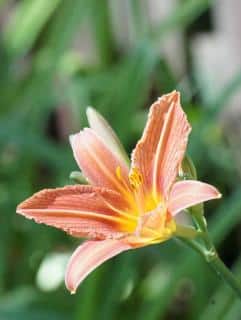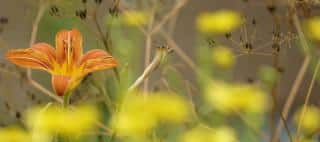

Hemerocallis, also called daylily, is known for its flowers that are splendid even though their life span is very short.
Key hemerocallis facts
Name – Hemerocallis
Family –Liliaceae (lily family)
Type – perennial
Height – 20 to 40 inches (50 to 100 cm)
Exposure – full sun, part sun
Soil – ordinary, rather clayish
Foliage: evergreen – Flowering: June to September
Both in pots and directly in the ground, it requires a little care to make the blooming more expansive.
Hemerocallis blooms atop long, slender stems. This means you must make sure it doesn’t get any strong winds. Also, make sure it doesn’t get scorching hot, since this would wilt the short-lived flowers even faster.
It is recommended to plant hemerocallis in fall even though you can plant all the way up to spring if you avoid frost spells.
To keep your hemerocallis as long as possible, proceed to divide the clump after the blooming.
Repotting in spring will let the plant develop well.
Select flower plant soil mix for this.
This plant loves slightly shade-covered emplacements or sunny spots that don’t get too hot.
Both in pots and directly in the ground, prefer light sun and a spot that seems sheltered enough from wind.
Traditionally, Hemerocallis is a great plant to line the edges of flower beds, driveways and walls. It grows dense leafage and marks perimeters quite well.

Cut back to the shortest at the end of fall.
In case of winter that is colder than usual, it is best to protect the base of the plant with dead leaf mulch.

It has the advantage of bearing evergreen leaves and boasting very beautiful flowers that appear in ranges of red, orange and yellow.
In a flower bed or as a cut flower in a vase, it is extremely striking.
Upon planting, feel free to enrich the soil with soil mix and even manure and seaweed compost.